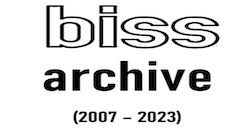This new issue of BISS-Trends is a semiannual monitoring review of the primary trends in the development of the Belarusian state and society in the first half of 2015.
This review focuses on the main trends in the following areas: political democratization/political liberalization; economic liberalization; good governance and rule of law; geopolitical orientation; and cultural policy.
The political democratization/political liberalization sector stagnated in the first half of 2015 with a simultaneous — albeit insignificant — shift towards deterioration. Although there were fewer instances of repression against political and public activists in the first half of the year, some legislative acts and amendments limiting the freedom of speech were introduced, and the first websites were blocked “for the distribution of unreliable information that can harm state or public interests”.
The economic liberalization area was also characterized by continuing stagnation within the scope of the ongoing negative trends and accumulation of imbalances in the economy. Despite positive changes (money market liberalization), the key macroeconomic indicators markedly deteriorated in the first half of the year, whereas the economic authorities demonstrated their propensity for the use of “manual control” and unwillingness to put in place structural reforms.
In the sector referred to as good governance and rule of law amendments were introduced to ensure long-term improvements in the “rules of the game” and their unification. Nevertheless, some of the legislative initiatives ran counter to the intention of the authorities to unify and improve the legislative system, which characterizes the good governance and rule of law trend in the first six months of 2015 as “insignificant progress”.
In the geopolitical orientation section, the trend towards further improvement in Belarus’s relations with the West can be observed, alongside growing contradictions with Russia. Further, in the first half of 2015, Belarus started moving towards what is in fact a real, not simply declared, multi-vector foreign policy pattern.
The cultural policy sector is marked by progress with quality changes, which is primarily attributed to the official recognition of the Soft Belarusianization policy at the top level. However, the intensification and deepening of the Soft Belarusianization policy at the state level are contained by the lack of respective regulatory acts and inconsistent activities by officials.





